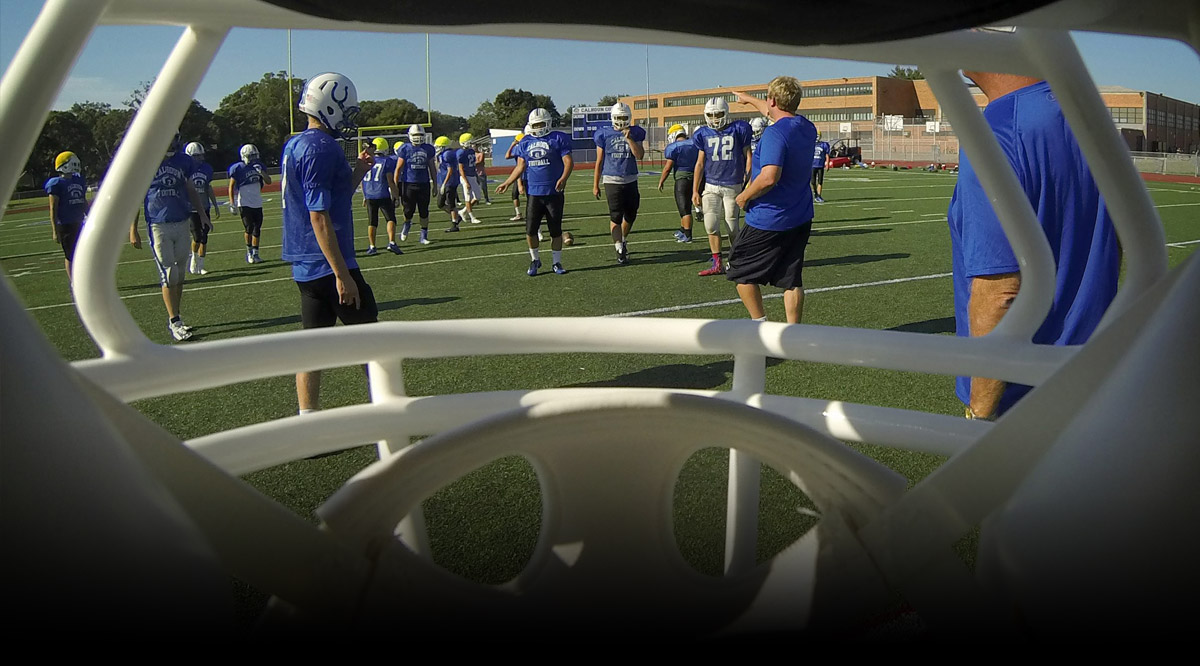helmets-ratings
VIRGINIA TECH HELMET SYSTEM

Virginia Tech researchers
have developed a
5-star helmet rating system
that has become the industry standard.
A Newsday examination found Long Island high schools have at least 885 1-star and 2-star helmets in circulation.
Experts call these “low performers” at reducing the risk of concussion.

5-star helmets are considered
the best at reducing head acceleration within the helmet on impact.

 Riddell VSR4Riddell says this helmet, introduced in 1992, “was the most advanced helmet in the marketplace for many years.” With foam padding on the interior, this was the most common helmet worn in the NFL as recently as 2010. Riddell discontinued sales in May 2011, the same month Virginia Tech released its ratings. There are 343 in circulation on Long Island.
Riddell VSR4Riddell says this helmet, introduced in 1992, “was the most advanced helmet in the marketplace for many years.” With foam padding on the interior, this was the most common helmet worn in the NFL as recently as 2010. Riddell discontinued sales in May 2011, the same month Virginia Tech released its ratings. There are 343 in circulation on Long Island.
 Schutt Air AdvantageIntroduced in 2001, it was designed to be lighter and had a smaller outer shell than most helmets. Helmet designs since have become larger, often with more room for padding on the inside, to better manage energy. Schutt says it discontinued this helmet in 2011. There are 542 in circulation on Long Island.
Schutt Air AdvantageIntroduced in 2001, it was designed to be lighter and had a smaller outer shell than most helmets. Helmet designs since have become larger, often with more room for padding on the inside, to better manage energy. Schutt says it discontinued this helmet in 2011. There are 542 in circulation on Long Island.
 Schutt DNA Pro+This helmet’s shell is slightly smaller and therefore does not manage energy on low-impact hits as well as its others in Virginia Tech’s testing, Schutt says. This helmet is the third generation of a model released in 2003. Schutt stopped manufacturing this model last month. There are 666 in circulation on Long Island.
Schutt DNA Pro+This helmet’s shell is slightly smaller and therefore does not manage energy on low-impact hits as well as its others in Virginia Tech’s testing, Schutt says. This helmet is the third generation of a model released in 2003. Schutt stopped manufacturing this model last month. There are 666 in circulation on Long Island.
 Riddell RevolutionRiddell says this was the first helmet designed to reduce concussions. Introduced in 2002, its polycarbonate shell is wider and extended further along the jaw line than its predecessors. Riddell said last month it will no longer manufacture this helmet. There are 3,028 in circulation on Long Island.
Riddell RevolutionRiddell says this was the first helmet designed to reduce concussions. Introduced in 2002, its polycarbonate shell is wider and extended further along the jaw line than its predecessors. Riddell said last month it will no longer manufacture this helmet. There are 3,028 in circulation on Long Island.
 Riddell SpeedFlexIntroduced last year, the SpeedFlex features flexibility in certain portions of the helmet’s shell and facemask, which Riddell says reduces impact force transfer to the athlete. There are 154 in circulation on Long Island.
Riddell SpeedFlexIntroduced last year, the SpeedFlex features flexibility in certain portions of the helmet’s shell and facemask, which Riddell says reduces impact force transfer to the athlete. There are 154 in circulation on Long Island.
All major helmet manufacturers make 4-star and 5-star helmets.
“The difference between the top and the bottom is dramatic…” – Stefan Duma, Virginia Tech
There was a 54% reduction in concussions
among players wearing a 4-star helmet compared with those wearing a 1-star helmet, a separate six-year study found.

In 2014, a Shoreham-Wading River junior died after a helmet-to-helmet hit.
In response, Port Jefferson replaced its helmets by buying
50 new 5-star helmets for $14,749

“If this was your son, which helmet would you want on his head?” – Port Jefferson athletic director Debra Ferry
Schools typically purchase about 10 new helmets per year ranging in cost from $150 to $400.
Oyster Bay bought 85 5-star helmets equipped with sensors for $33,915
Oyster Bay is the first school on Long Island to wear these helmets that signal when a player receives a hit above a certain threshold.

Regardless of which helmet a player is wearing, concussions remain a part of the game.
“I don’t know if a different helmet would have done anything.” – Pam O’Donnell

But many experts believe better helmets can help.
“I would not put my kid in one of those 1-star helmets.” – Kevin Guskiewicz, a member of the NFL’s Head, Neck and Spine Committee

